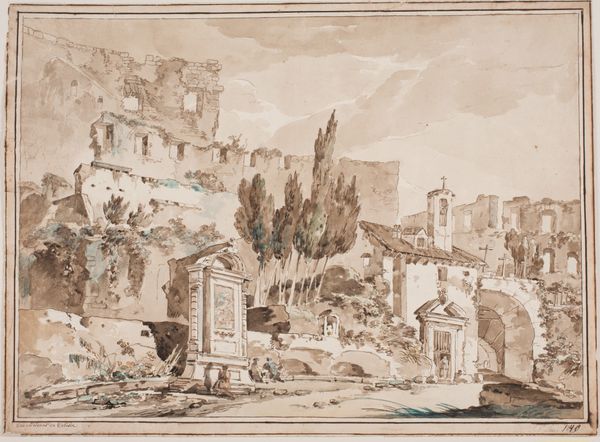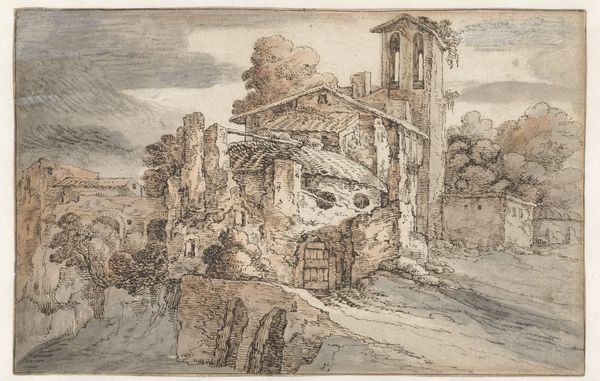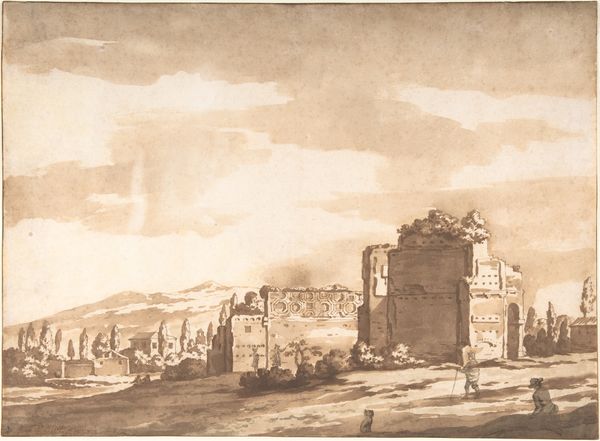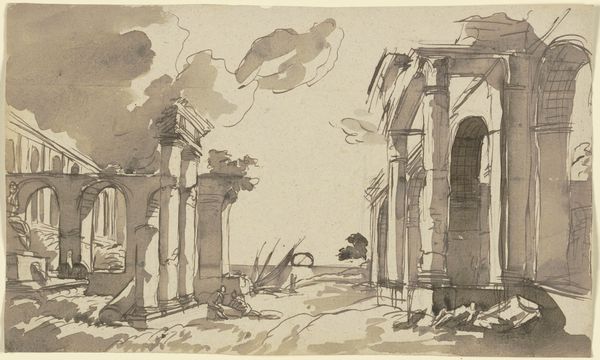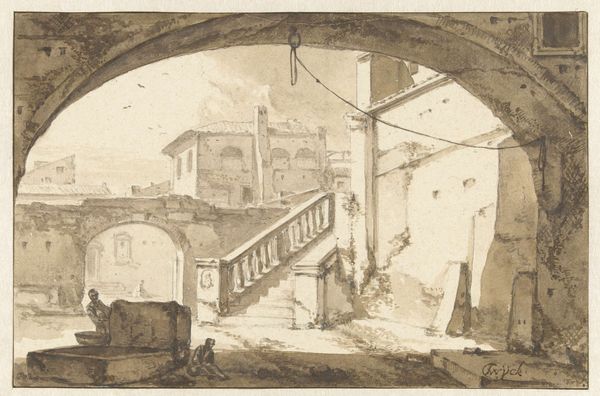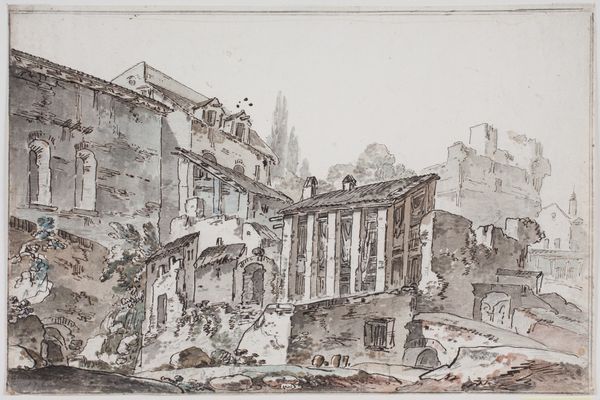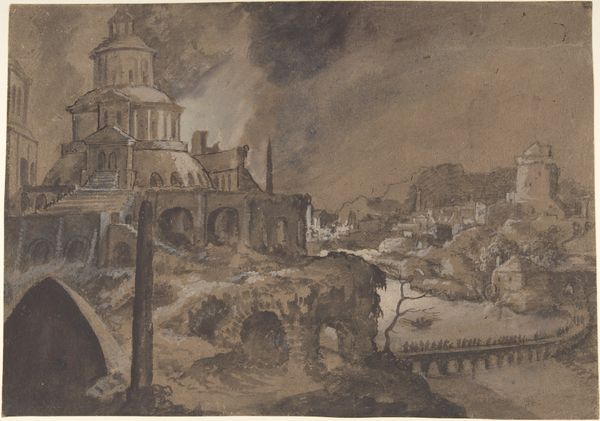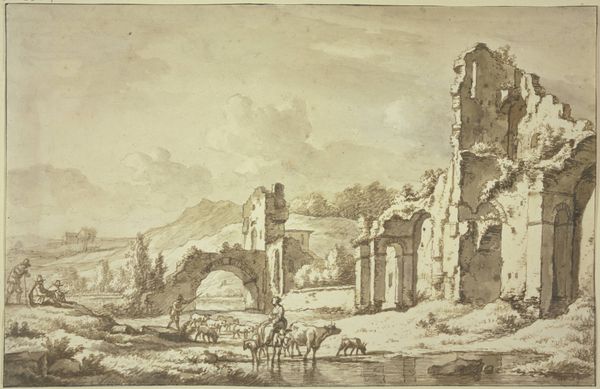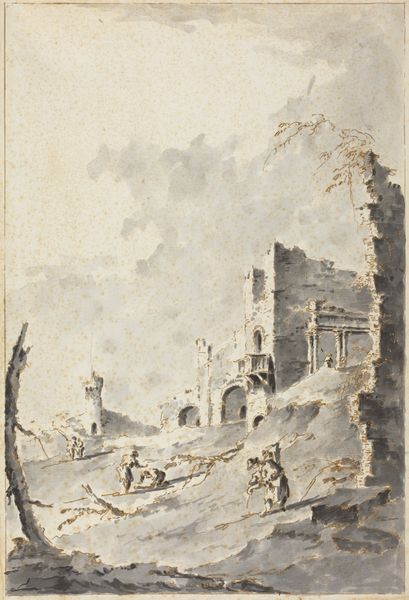
drawing, watercolor
#
drawing
#
neoclacissism
#
landscape
#
classical-realism
#
watercolor
#
watercolor
Dimensions: overall: 26.2 x 36.9 cm (10 5/16 x 14 1/2 in.)
Copyright: National Gallery of Art: CC0 1.0
Editor: Here we have Clérisseau's watercolor drawing, "Roman Ruins with a Sepulchre." There’s a distinct feeling of melancholic grandeur…like beauty amid decay. What catches your eye? Curator: The sepulchre acts as a powerful memento mori. Wreaths—usually symbols of victory and celebration—here adorn a tomb, prompting thoughts of transience and mortality, consistent with Neoclassical explorations of heroism and loss. What do the crumbling arches evoke for you? Editor: A sense of lost empire, maybe? All that's left of once great monumentality. I suppose it also alludes to the passage of time. Curator: Precisely. But consider the architectural style—the classical realism evokes Rome, of course. Now consider: what did Rome symbolize for the late 18th century? It stood for civilization, law, and order. But it had fallen…so, the ruins symbolized not just mortality, but the fragility of any human endeavor to build a perfect society. What do the colors contribute, in your opinion? Editor: I'm guessing that the muted washes reinforce this mood…a sort of faded glory, nothing brightly optimistic? Curator: True. This restricted palette, dominated by sepia tones, links the physical decay to a kind of emotional weathering, reflecting the somber themes so prevalent at the time of the French Revolution and its aftermath, the same epoch when Neoclassicism came into fashion. Editor: So, it’s not just pretty ruins, but loaded with symbolic meaning for its time. I'll never look at ruins the same way again. Curator: Indeed, it becomes a mirror reflecting the anxieties and aspirations of an era.
Comments
No comments
Be the first to comment and join the conversation on the ultimate creative platform.


